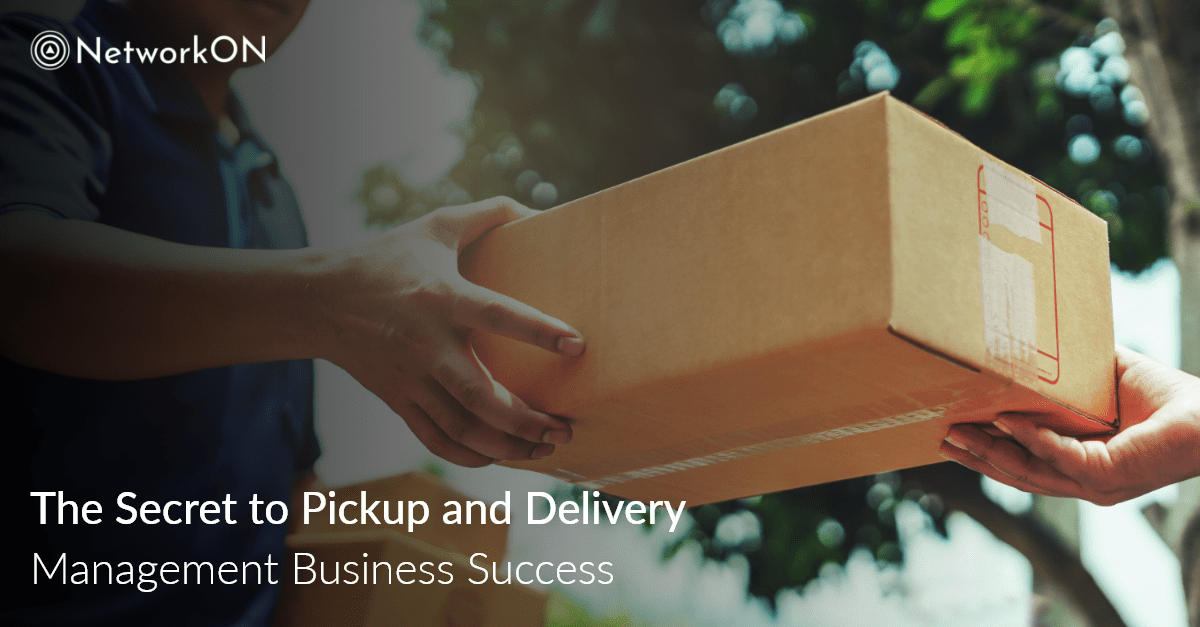Table of Contents
Logistics companies completely understand how difficult it can be to run and maintain a pickup and delivery management business. The drastic rise in eCommerce has opened a lot more avenues for on-demand pickup and delivery but the gap between the demand and supply still needs to be fulfilled completely.
An ideal pickup and delivery management business aspires to provide its services in an efficient manner. Logistics companies have been improving a great deal ever since several new online marketplaces have emerged.
Logistics companies are no longer restricted to national barriers and are working towards offering on-demand pick-up and delivery services globally. That is precisely the reason why the pickup and delivery management business is one of the most promising sectors to enter or invest in.
How is Technology Improving the Pickup and Delivery Management Businesses?
Thanks to the constantly growing eCommerce sector, logistics companies are now transitioning to serve B2B businesses as well. The increasing number of online portals is giving plenty of opportunities to exploit the logistics industry and they can no longer survive without integrating robust technology into their processes.
Logistics businesses are earning great profits by automating their transportation handling. By digitizing the mundane processes, pickup, and delivery management businesses can improve their workflow and optimize all stages of their logistics.
Once the Uber-like app services model proved itself the taxi booking process was never the same. The logistics industry is following in the footsteps of the same and is now bringing services like pickup and delivery, cargo delivery, freight forwarding services, and more under easy-to-use mobile apps.
Logistics services are well-supported by mobile apps and automated processes boost their productivity a great deal. Digitization also supports related activities like manufacturing, warehousing, trucking, and delivery of products available online.
A well-designed on-demand pickup and delivery app can eliminate the most complicated problems involved in logistics. Some of them include:
- Employee productivity
- Business operations
- Cost management
- User experience
Here are some of the ways in which technology improves a logistics business:
- Tracking:
Pickup and delivery apps enable logistics companies to track the cargo and vehicle fleet in real-time. By monitoring vehicle movement, they can track employee performance and improve their last-mile delivery by providing the exact status of the shipment to the customers.
- Last Mile Delivery:
Orders go through smoothly through different warehouses but the real challenge begins when they are out of the large facilities. There is a good chance of having some manual errors during the last mile delivery. A delivery management system helps you eliminate issues in the last-mile arm of the delivery process and deliver a great customer experience.
- Data-Based Decision Making:
Real-time data is the biggest asset for any logistics business. By having tons of data at your disposal, you can dive into the insights option in your app to make informed decisions and empower your teams to improve their performance.
- Mitigate Costs:
A digital delivery management solution automates the regular and mundane tasks in your business process to improve efficiency and reduce operational costs. Automatic route optimization, flexible delivery location rescheduling and push notifications to the fleet about the same save you a lot of time and reduce fuel consumption.
- Remove Paperwork:
Multiple forms, arrival and departure receipts, and other forms of paperwork can be misplaced easily. By digitizing your logistics business, you can migrate all sorts of information into the mobile app. Going paperless saves time and ensures that all your information is managed securely with accurate time stamps.
- Transparent Process:
Well-defined roles and responsibilities are critical for a successful logistics business. Reduce any performance gaps, improve employee Alternessa and manage all the operations with a robust application. When everyone knows what their exact role is, the chances of errors are reduced to zero.
Digitization is the Key to Success!
The global logistics market is expected to grow consistently at 4.5% CAGR by 2027. Many entrepreneurs are actively investing in the logistics industry and are optimizing all possible fronts using automation, robots, and sustainability.
The increasing use of smart sensors and communication devices simplifies many processes and improves accessibility for all parties involved in the supply chain. The administration departments work better with all the data available at their fingertips and analysts can also use machine learning to improve the customer service experience.
However, with opportunities come new challenges. The logistics industry is booming globally and as more traditional companies transport their services with digital solutions, they have to deal with a rapidly changing environment.
The constant pressure of matching the services offered by global companies and creating business models that are suited for the eCommerce environment can really put immense pressure on pickup and delivery management businesses.
Here are a few ways to ensure that your pickup and delivery management business can scale up in a sustainable way and generate increased revenue year on year.
Step 1: Planning
No business can be successful without a proper management plan. As an entrepreneur, you need to focus your attention on different frameworks like:
- Costs involved
- Time management
- Transportation fleet
- Blueprint for every operational task
- Workflows for all employees
- Advanced planning of tasks
- Revenue model
In a nutshell, with proper planning, you can invest your time and money efficiently and generate maximum profits with minimal effort.
Step 2: Execution
You can spend many hours planning each and every aspect of your business, but it is of no use if you cannot execute the plan properly.
Make sure that every strategy you create is implemented in conjunction with your desired business goals and objectives.
Step 3: Automating Processes
Planning, execution and then, automation. For each aspect of your business, whether it is documentation, real-time tracking, route optimization, or last-mile delivery, you need to automate every part of your process with a delivery management system.
You can always upgrade your existing systems using delivery management solutions from NetworkON. To know more about starting for FREE, click here.
Step 4: Synchronize Your Teams
When all the pieces fall into place it is nothing less than harmony. With the right systems in place, the pickup and delivery management business can be one of the most exciting ventures to work in.
Your team is going to play a crucial role in delivering the success you desire, so make sure that you help all of them synchronize their efforts seamlessly. From delivery boys to warehouse managers, everyone should be accountable for their work and guided regularly by the management.
Few ways to help your employees evolve are:
- Regular soft skills training programs
- Motivational exercises
- Technical training about latest technologies and trends in the market
Create competency reports for all employees by evaluating their training and prepare a growth chart to keep a track of your top performers. It is from these top employees that the future managers will emerge and solve problems in your organization.
Step 5: Last Mile Delivery
B2B and B2C businesses have different demands when it comes to product delivery. However, as a pickup and delivery management business, it is your responsibility to have operating models for both segments.
Whether you are dealing with individual customer orders or bulk B2B requirements, you need to operate diligently and offer flexibility, affordability, and transparency at all times. Your delivery fleets can always use a delivery management system powered by NetworkON to ensure a smooth last-mile delivery.
Remember, last-mile delivery is a crucial factor when it comes to an organization’s competency and profitability. The only way to ensure sustainable growth is to adapt and evolve when dealing directly with customers.
Step 6: Technology and Transportation
Technology is of no use if not applied to the transportation arm of your pickup and delivery management business. Synchronize all your vehicles with your delivery management system and enable vehicle tracking using a GPS service.
Keep your vehicles in running condition with regular maintenance checks based on travel data generated by the delivery management system. Additionally, you can reduce your fuel consumption by half with the advanced tracking and route optimization capabilities of your delivery management solution.
Final Thoughts
The on-demand pickup and delivery business can be full of ups and downs, but if you follow the steps mentioned above, then you can always come up with solutions in time.
So, take your unique marketing strategy and implement it today to create a profitable pickup and delivery management business powered by AI-based route optimization and last-mile delivery capabilities.
Create your own route optimization, last-mile delivery, and fleet management solution using NetworkON today. It is always free to start and order solutions that are scalable, sustainable, and help you increase your revenue manifolds.
To know more about getting started, talk to our experts over a consultation today. For other queries and questions, email us at info@networkon.io or visit our website.
Frequently Asked Questions
What are the key benefits of using technology in pickup and delivery management?
Technology is crucial in pickup and delivery management because it enhances efficiency and reduces costs. Key benefits include real-time tracking of cargo and fleet, automation of mundane tasks, data-based decision-making, improved last-mile delivery, and eliminating paperwork. These advancements help logistics companies optimize operations, improve customer experience, and ensure transparent processes.
How does a delivery management system improve last-mile delivery?
A delivery management system streamlines last-mile delivery by optimizing routes, providing real-time updates, and reducing manual errors. This technology ensures timely deliveries, minimizes fuel consumption, and enhances customer satisfaction by offering precise tracking and communication features. By using such systems, logistics companies can effectively manage the final leg of delivery, which is often the most challenging part of the process.
What steps can I take to sustainably scale my pickup and delivery management business?
To scale your pickup and delivery management business sustainably, focus on the following steps:
Planning: Develop a comprehensive plan covering costs, time management, transportation fleet, and workflows.
Execution: Implement strategies that align with your business goals and objectives.
Automation: Use technology to automate documentation, tracking, and delivery processes.
Team Synchronization: Ensure all team members are aligned with business goals through training and regular communication.
Last-Mile Delivery: Optimize last-mile delivery for B2B and B2C segments to maintain flexibility and transparency.
How can NetworkON solutions benefit my pickup and delivery business?
NetworkON provides scalable, AI-powered delivery management solutions to enhance logistics operations. Their platform offers features like route optimization, real-time tracking, fleet management, and last-mile delivery capabilities. These tools help reduce operational costs, improve delivery accuracy, and boost overall efficiency, allowing your business to grow and adapt in a competitive market. NetworkON solutions are easy to implement and offer a free trial to get you started.





开设Binance账户
Thank you for your sharing. I am worried that I lack creative ideas. It is your article that makes me full of hope. Thank you. But, I have a question, can you help me? binance